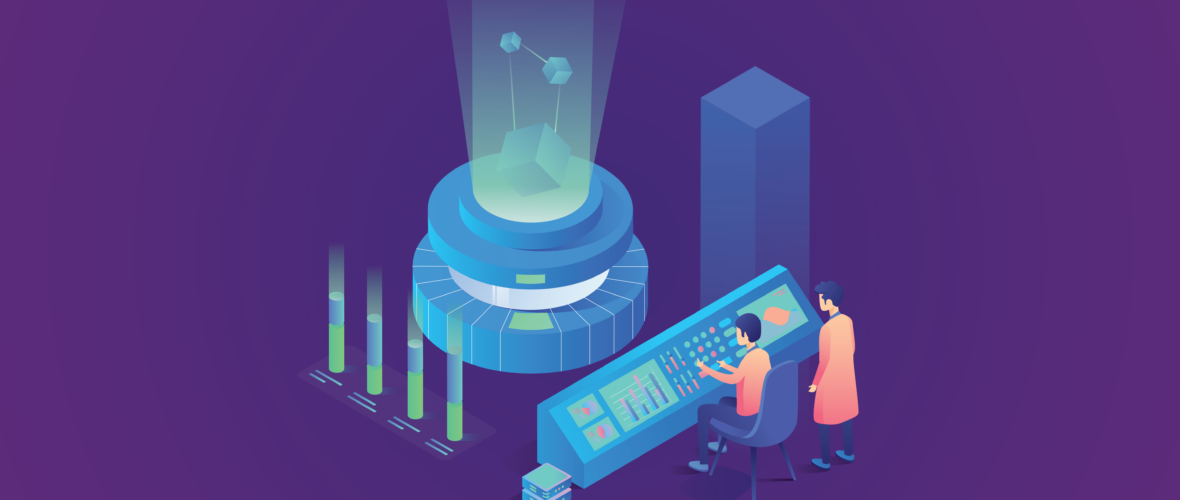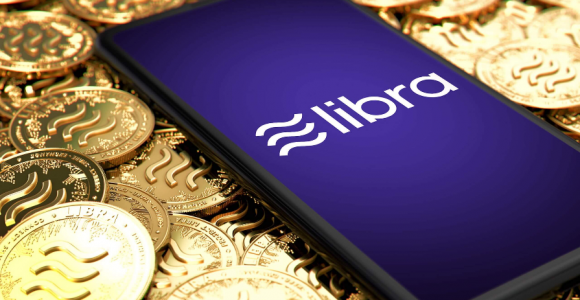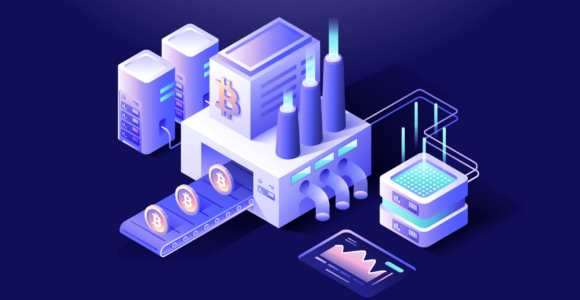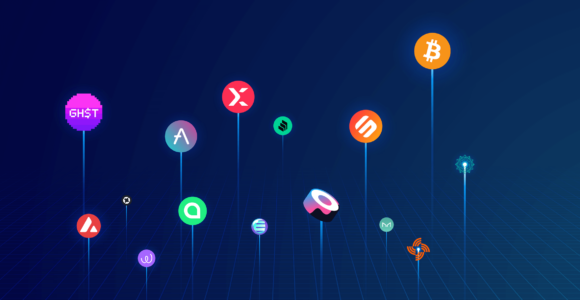Bitcoins, like people, come into the world as a result of extended labor. They are created when Bitcoin miners perform complicated cryptographic calculations to validate blocks of transactions.
Although thousands of miners around the world compete to perform the calculations using computers with circuits that are specifically designed to perform this task, it still takes about 10 minutes for the first miner to get the right answer and validate the block of transactions.
A Brief Detour Into Mining
Articles like this one invariably describe the computational work done by minors as a complicated cryptographic task, but it’s not that complicated. Data from the Bitcoin blockchain is encrypted using an algorithm – a formula – known as SHA-256. The result is a 256-bit number that appears to be random. There is no known way to convert the generated value back into the original data.
Hashing results in a number between 0 and 115,
The Bitcoin network calculates a threshold value for judging the work of Bitcoin miners. For example, it may specify that the first 30 digits must be zeroes. That makes a much smaller number: 8,687,
When the first miner generates a valid value, the block of transactions is validated and copies are sent to all the computers that store the Bitcoin open ledger. At that point, the data in the block cannot be changed. Its encoded signature is embedded in the block. The winning miner receives a reward of Bitcoins, which are created and added to the blockchain at that moment. This is the only way Bitcoins are created.
Yes, But What About Halving?
When Satoshi Nakamoto invented Bitcoin, he realized that many people would become miners in order to earn Bitcoins. The supply of Bitcoins would expand rapidly, potentially leading to inflation – a reduction of the coin’s value.
That’s why Nakamoto created halving. It’s a process that cuts the rewards of mining in half and slows the creation of Bitcoins. It helps stabilize supply and demand.
Mining rewards are cut in half every time 210,000 blocks are validated and added to the blockchain. The blockchain adjusts the difficulty of the problem (by specifying higher or lower target values) to ensure that this happens once every four years.
Originally, miners who solved the cryptographic problem received a reward of 50 Bitcoins. In 2012, the reward was cut to 25, then 12.5. In 2020, the reward was reduced to 6.25 BTC. In 2024 it will drop to 3.125 BTC.
In addition to making mining less profitable, halving reduces the rate at which Bitcoins are created. When Bitcoin was launched, 50 Bitcoins entered the ecosystem every 10 minutes as blocks were added to the blockchain. Today, just 6.25 Bitcoins are created for each block.
Given this data, it’s easy to calculate that the last Bitcoin will be mined in 2140. At 2140’s halving event, the reward for mining will drop to essentially zero.
Why Should I Care?
If you’re not a Bitcoin miner, you are probably safe ignoring halving.
Historically, industry insiders have predicted price fluctuations before each halving event. The predictions boost public awareness of Bitcoin, and historically there has been a temporary price bump. But the bump is small compared to the large fluctuations that are shown on every Bitcoin price chart. Many factors influence Bitcoin’s price, and the impact of a celebrity endorsement on Twitter can dwarf the effects of halving.
As for mining, it’s not really practical for individuals anymore. Virtually all Bitcoins are now born in large mining farms where thousands of custom-built PCs with specialized mining circuits compete for Bitcoins. The blockchain generates and delivers to miners 37.5 BTC every hour. That’s more than €1.5 million at August 2021 prices. It’s no wonder mining has become big business.
For more on Bitcoin mining and halving, visit our Bitcoin price page, which details all the current statistics and trends.
NOTE
This text is informative in nature and should not be considered an investment recommendation. It does not express the personal opinion of the author or service. Any investment or trading is risky, and past returns are not a guarantee of future returns. Risk only assets that you are willing to lose.




 IOS
IOS Android
Android